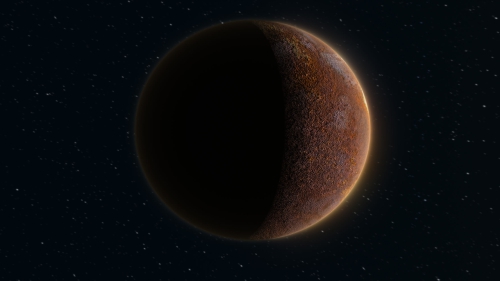Solomon's Messenger Bird

The hoopoe (hud-hud) is an elegant bird, which is related to the hornbill. It gets its unusual name from its shrill call of "hoops", which rings clear and far and is repeated two or three times. Often the cry is cut off very short. This may be caused by the bird's bill sharply striking the ground at the end of the note. It is one of the Old World's non-passerine birds. Its scientific name is "Upupa epops" (family Upupidae, of the roller order, Coraciiformes). King-fishers, bee-eaters, rollers, hoopoes and hornbills are collectively referred to as roller-like birds. There are about seven species of hoopoe. It is a widely distributed bird located in the British Isles, Europe, Asia, and Northern Africa. It exists in the temperate and tropical regions of the Old World. This is a small bird about 12 inches long, the size of a large thrush or mynah, and has short legs with heavy feet and powerful claws. It has a handsome erect semicircular crest (large crown of feathers tipped with black that constantly opens and closes on the head). This crest of black-tipped feathers on the head is the most striking feature of the hoopoe. It is fawn or cinnamon in color with black and white stripes on the back, wings and tail. It is long and fan shaped with feathers that increase in length from front to back. When feeding, the crest is closed. When alarmed or excited, the crest is unfurled and opens out like a fan.
The upper part of its body is a pale brown, with wings of black striped with white. The under-parts are buff, streaked with black. The black tail has one broad stripe of white. These bands are clearly seen when the bird is in flight. Its short legs are well adapted for walking. The tail is not very long, and is black with a white central bar. The beak is long, slender and slightly down-curved. The hoopoe's call is soft and musical, repeated every couple of seconds. Because of this sound it makes, the bird got its name in many languages. For example in English it is 'hoopoe', in Persian and Urdu it is "hud".
Hoopoes are usually found in open areas far away from patches of vegetation or habitation. They can most often be seen singly but are sometimes found in pairs. The hoopoe walks and runs with ease, as it feeds almost entirely on the ground. It walks with quick steps, bobbing its head in time with the steps and pausing to probe with its long bill in the ground and in crevices, in search of large arthropods and small vertebrates. Its flight is strong and direct. When perched, it may quietly flash its long crest open and shut. Lawns, paths and manure heaps are favorite spots as they provide ample food for this bird. It feeds mainly on insects and other small invertebrates found around decaying organic matter. It also feeds on insect larvae, spiders, centipedes and earthworms. The long pointed beak acts like a pair of forceps, fishing prey out of cracks and fissures. As it dashes along, it snatches up insects and worms in its long bill. Before the insect is eaten, it is beaten on the ground to remove the hard covering and appendages like legs and wings. The bird then tosses up its prey and skillfully catches it in its open beak.
The bird can soar quite high to escape birds of prey. But by and large it prefers to fly just above the ground. The hoopoe prefers the ground to the sky, and does not build its nest in trees. It does, however, utilize dark holes in trees or cavities in walls, roofs, soil banks or cliffs as nests. An untidy collection of grass, straw, hair and leaves deposited on the floor of the holes makes up the nest. Most of the nests can be found in April and May in Asia. Six to nine eggs are laid on the debris by the female who alone incubates them for 16-19 days. During this period she does not leave the nest and is fed by the male. After the chicks hatch, the mother continues to keep them warm for another eight days. The nestlings remain in the nest for 2-26 days.
When threatened by a bird of prey, the hoopoe flattens itself against the ground and spreads its tail and wings. The head is thrown back and the bill points straight up. Whatever this indicates, it does seem to discourage potential enemies.
Hoopoes are found in almost all parts of Asia, even in cities and towns where there are few open spaces left.
Hoopoe: Messenger of Prophets
Prophet Solomon was a king and the ruler of Syria and Palestine whose armies consisted of troops made of men, Jinn and birds. It is possible that the birds were employed for communicating the messages, hunting and for other suitable services.
In the Quran (27:20) we read that Prophet Solomon reviewed his birds and found the hoopoe (hud-hud) missing. His most mobile arm was the birds, which were light on the wing and flew and saw everything like efficient scouts. Prophet Solomon expressed his anger and his desire to punish the hoopoe severely if it did not present itself before him with a reasonable excuse. Within a short while the hoopoe returned saying,
"I have obtained knowledge of things which you have no knowledge. I have brought sure information about Saba (Sheba, a well-known rich people of southern Arabia, now the present day Yemen. Their capitol city was Ma'rib which lay about 55 miles to the north-east of Sana, the present capitol of Yemen). There I have seen a woman ruling over her people: she has been given all sorts of provisions, and she has a splendid throne. I saw that she and her people prostrate themselves before the sun, instead of Allah!"
Prophet Solomon said, "We shall just now see whether what you say is true, or that you are a liar. Take this letter of mine and cast it before them; then get aside and see what reaction they show." Quran, 27: 27-28.
Here ends the role of the hoopoe. Some people have interpreted that hoopoe (hud-bud) was the name of a man and not a bird, because a bird could not possibly be endowed with such powers of observation, discrimination and expression as described above. The counter-argument is that in spite of great advances in science and technology, man cannot tell with absolute certainty what powers and abilities the different species of animals and their different individuals possess? Man has not so far been able to know through any certain means what different animals know and what they see and hear; what they feel, think and understand; or how the mind of each one of them works. Yet, whatever little observation has been made of the life of the different species of animals, it has revealed some of their wonderful abilities. Now, when Allah, Who is the Creator of these animals, tells us that He had taught the speech of the birds to one of His Prophets and blessed him with the ability to speak to them, and the Prophet's taming and training had so enabled a hoopoe (hud-hud) that it could make certain observations about foreign lands and could report them to the Prophet, then the above said interpreters should be prepared to revise their little knowledge about the animals in the light of Allah's statement. Books such as "When Elephants Weep" and other books on dogs, cats and ants throw light on animal intelligence, thinking and behavior.
Ibrahim B. Syed, Ph.D. is President of the Islamic Research Foundation international, Inc. He can be reached at [email protected]
Related Suggestions
jazakum Allah khairan
Is it true that the Prophet Solomon
was so inclined to have the ability
to communicate with the creatures?
I have read stories of flocks of birds flying
in such a way that they spell out 'Allah'
....also some schools of fish.
Fins, fur, scales and feathers.
Another one of Allahs greatest creations.
Peace and Blessings
In the Glorious Quran, Prophet Solomon is Sulaiman AS, and Jacob is Yaqub, AS (Alaih-Salaam).
Rebekah and the twin brother of Esau. If you go to your Holy Quaran's Index by name, the reference articles should be listed and you can read their stories.

















